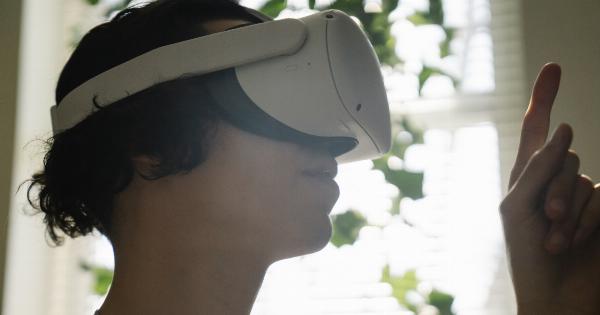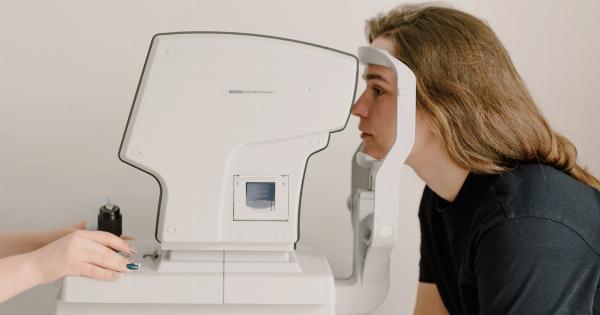Bionic eyes, also known as visual prostheses, offer hope to individuals with severe vision impairment or complete blindness.
These incredible devices bridge the gap between the world of the blind and the world of the sighted, enabling individuals to regain some form of visual perception. In this article, we will explore the technology behind bionic eyes, their potential benefits, and the future possibilities they hold.
Understanding Bionic Eyes: How Do They Work?
Bionic eyes work by utilizing a combination of hardware and software to transmit visual information to the brain. They consist of three main components:.
- A small camera, worn either on glasses or directly implanted in the eye, captures visual information from the surrounding environment.
- A processor converts this visual information into electrical signals.
- An implant, typically placed in the retina or visual cortex, stimulates the remaining functional neurons to produce visual perception.
By bypassing damaged or non-functioning parts of the eye, bionic eyes provide a pathway for visual information to reach the brain, allowing individuals to see to some extent.
The Benefits of Bionic Eyes
Bionic eyes offer several potential benefits for individuals with vision impairment:.
- Improved Quality of Life: Regaining even partial vision can significantly enhance one’s quality of life. Individuals can independently navigate their environments, recognize faces, and perform day-to-day activities with greater ease.
- Increased Independence: With bionic eyes, individuals can reduce their reliance on others for assistance. They can gain a sense of independence and accomplish tasks without constant support.
- Enhanced Emotional Well-being: The ability to see, even in a limited capacity, can boost emotional well-being and overall happiness. It can reduce feelings of social isolation and improve mental health.
- Expanded Employment Opportunities: Bionic eyes can open up new possibilities for employment, allowing individuals to pursue careers that require visual capabilities.
- Advancements in Technology: Research on bionic eyes contributes to advancements in the field of neuroscience and vision restoration, benefiting a broader population in the future.
Current Challenges and Limitations
While bionic eyes hold great promise, they still face certain challenges and limitations:.
- Visual Resolution: The quality of vision achieved through bionic eyes is currently limited compared to natural vision. Details may be blurry, and colors may not appear as vibrant.
- Restricted Field of View: Bionic eyes provide a narrower field of view compared to natural vision. This limitation can affect depth perception and the ability to perceive objects in the peripheral vision.
- Long-Term Durability: The longevity of bionic eyes and their components is still an area of ongoing research. Improving their reliability and durability is crucial for long-term success.
- Cost: The cost associated with bionic eye technologies can be a significant barrier, limiting access to those who would benefit most.
- Surgical Procedures: Implanting bionic eyes requires complex surgical procedures that may carry risks and potential complications.
The Future of Bionic Eyes
Despite the challenges, ongoing research and technological advancements continue to push the boundaries of bionic eye capabilities. Here are some exciting potential developments:.
- Improved Visual Resolution: Scientists are working towards enhancing the resolution of bionic eyes to achieve greater clarity, allowing individuals to perceive finer details.
- Expanded Field of View: Future iterations of bionic eyes aim to provide a wider field of view, mimicking natural human vision more closely.
- Integration with Augmented Reality: Combining bionic eyes with augmented reality could provide individuals with real-time information overlays in their visual field, further enhancing their perception and functionality.
- Wireless Power and Data Transmission: Researchers are exploring techniques to enable wireless power and data transmission for bionic eyes, reducing the need for external cables and enhancing convenience.
- Regenerative Medicine Approaches: Advancements in regenerative medicine hold the potential to restore damaged retinal cells or optic nerves, offering a more natural and effective alternative to bionic eyes.
Conclusion
Restoring sight with bionic eyes represents a groundbreaking field of research and technology. While current bionic eye technologies have their limitations, they offer significant benefits by enabling individuals to regain partial vision.
Ongoing advancements and future innovations hold the promise of further improving visual resolution, expanding the field of view, and integrating bionic eyes with augmented reality. With continued progress, bionic eyes have the potential to transform the lives of millions living with vision impairment or blindness, unlocking new possibilities and opportunities.
























